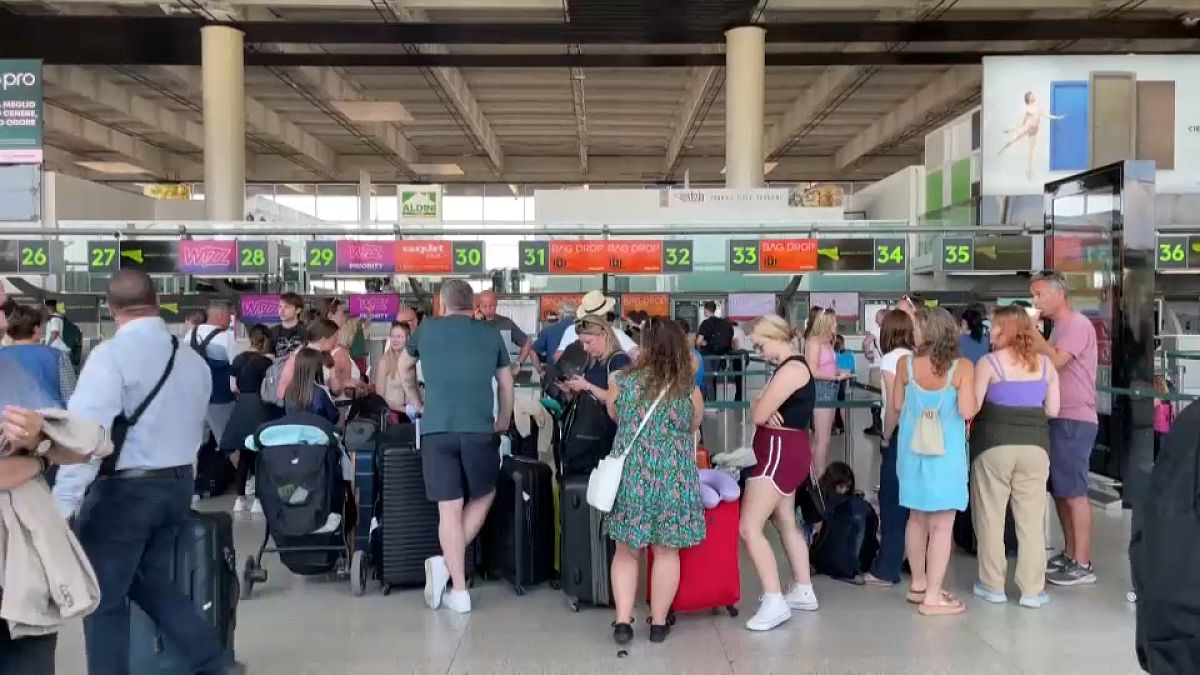Mount Etna, one of Europe’s most active volcanoes located on the Italian island of Sicily, began erupting earlier this week, causing disruptions in the region. The eruption sent lava flows down the 3,320-meter high cone, prompting the closure of Catania Airport due to potential risks from volcanic ash in the atmosphere. The airport issued a statement indicating that the runway was unusable, leading to the suspension of both arrivals and departures. The situation improved later on, allowing flights to resume with some restrictions still in place. In response to the eruption, the mayor of Catania imposed a ban on two-wheeled vehicles and reduced the speed limit to 30 km/h to mitigate the impact of the falling ash on the city.
The eruption of Mount Etna prompted Italy’s Civil Protection agency to raise the alert level for the area from green to yellow, signifying increased volcanic activity. The agency highlighted the volcanic risk in Italy, which has a high concentration of active volcanoes along with Iceland. They emphasized the importance of following instructions from civil protection authorities through various communication channels, including radio, television, and the internet. Additionally, they advised both locals and tourists to stay informed about the situation and adhere to safety guidelines to minimize any potential risks. With Italy being a hotspot for volcanic activity, vigilant monitoring and preparedness are crucial to safeguarding the population in areas prone to eruptions.
Meanwhile, on the nearby island of Stromboli, the Civil Protection agency issued a red alert warning as the volcano there also began erupting, sending ash clouds two kilometers into the sky and spilling lava into the sea. Fabrizio Curcio, Head of Italy’s Civil Protection Department, emphasized the heightened level of attention and surveillance on Stromboli following the red alert. He noted the implementation of an information campaign for citizens and the reinforcement of scientific monitoring systems to closely track the volcano’s activity. With the situation potentially deteriorating, residents and visitors in the area are urged to stay informed and heed any directives issued by the authorities to ensure their safety during the volcanic activity.
The eruption of Mount Etna and the heightened alert on Stromboli serve as a stark reminder of the volcanic risk that Italy faces due to its extensive network of active and potentially active volcanoes. The Civil Protection agency’s proactive approach in raising the alert level and disseminating information underscores the importance of preparedness and vigilance in mitigating the impact of volcanic disturbances. By advising the public to follow official instructions and monitoring systems, the authorities aim to minimize the risk to individuals living in volcanic-prone regions and ensure a coordinated response to any volcanic events that may occur. Italy’s position as one of the most volcano-rich countries in Europe necessitates a comprehensive strategy for volcanic risk management to safeguard the population and infrastructure from potential eruptions.
As the situation unfolds on Mount Etna and Stromboli, the ongoing volcanic activity underscores the dynamic nature of Italy’s volcanic landscape and the need for continuous monitoring and risk assessment. The eruption of Mount Etna and the red alert on Stromboli highlight the unpredictable nature of volcanic events and the potential impact on surrounding communities. By staying informed and adhering to safety guidelines, residents and tourists can contribute to a collective effort to enhance resilience and preparedness in the face of volcanic activity. As Italy remains at the forefront of volcanic risk in Europe, effective communication, coordination, and monitoring are essential components of the country’s volcanic risk management strategy to ensure the safety and well-being of all those living in volcanic hazard zones.
In conclusion, the recent volcanic activity on Mount Etna and Stromboli serves as a stark reminder of the volcanic risk present in Italy and the need for robust risk management measures. As authorities respond to the eruptions and raise alert levels in affected areas, it is crucial for residents and visitors to stay informed, follow official guidance, and prioritize safety during these unpredictable events. By emphasizing the importance of preparedness, surveillance, and communication, Italy’s Civil Protection agency aims to mitigate the impact of volcanic disturbances and protect the population from potential hazards. With a comprehensive strategy in place, Italy continues to navigate the challenges posed by its active volcanic landscape and work towards enhancing resilience in the face of natural disasters.











